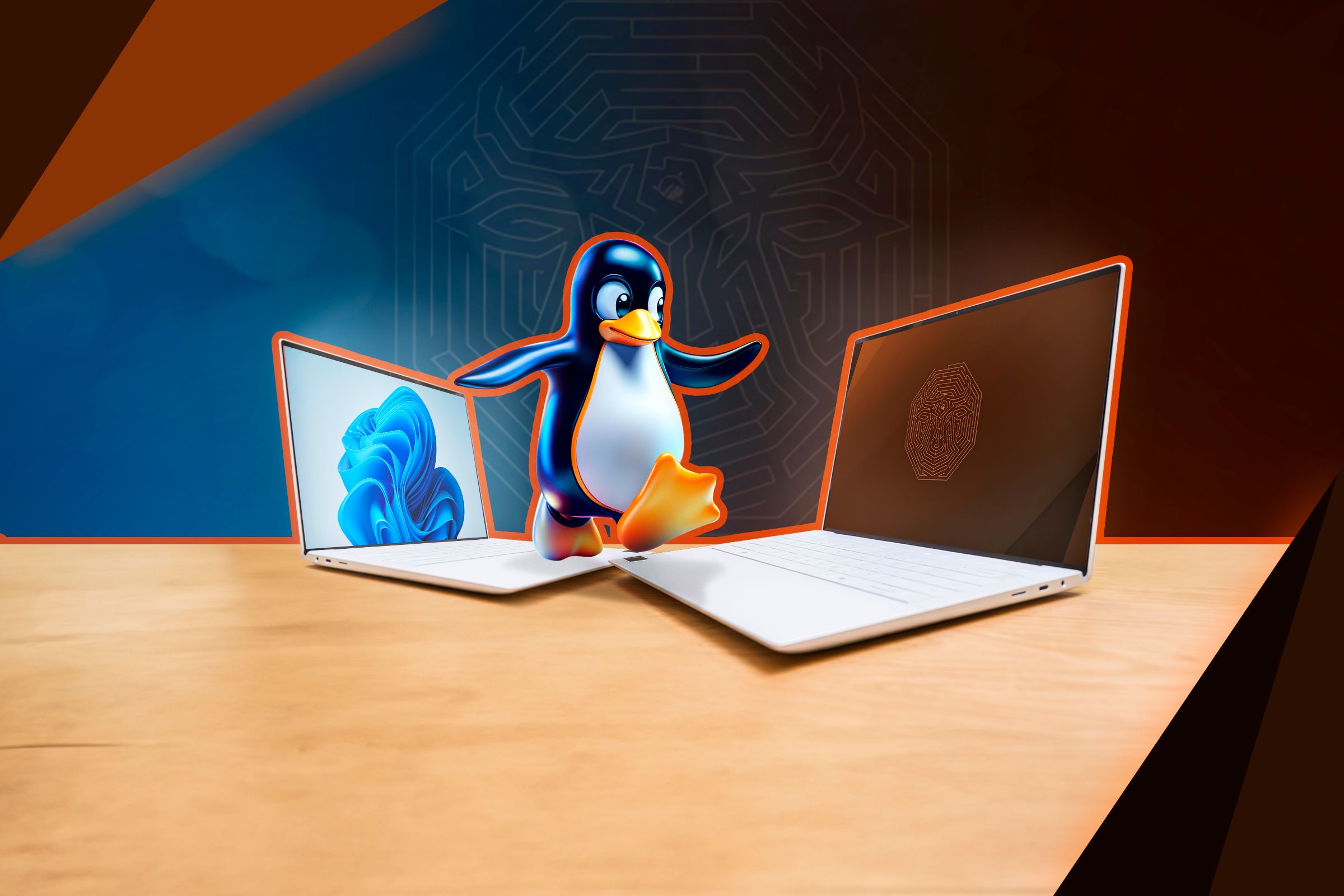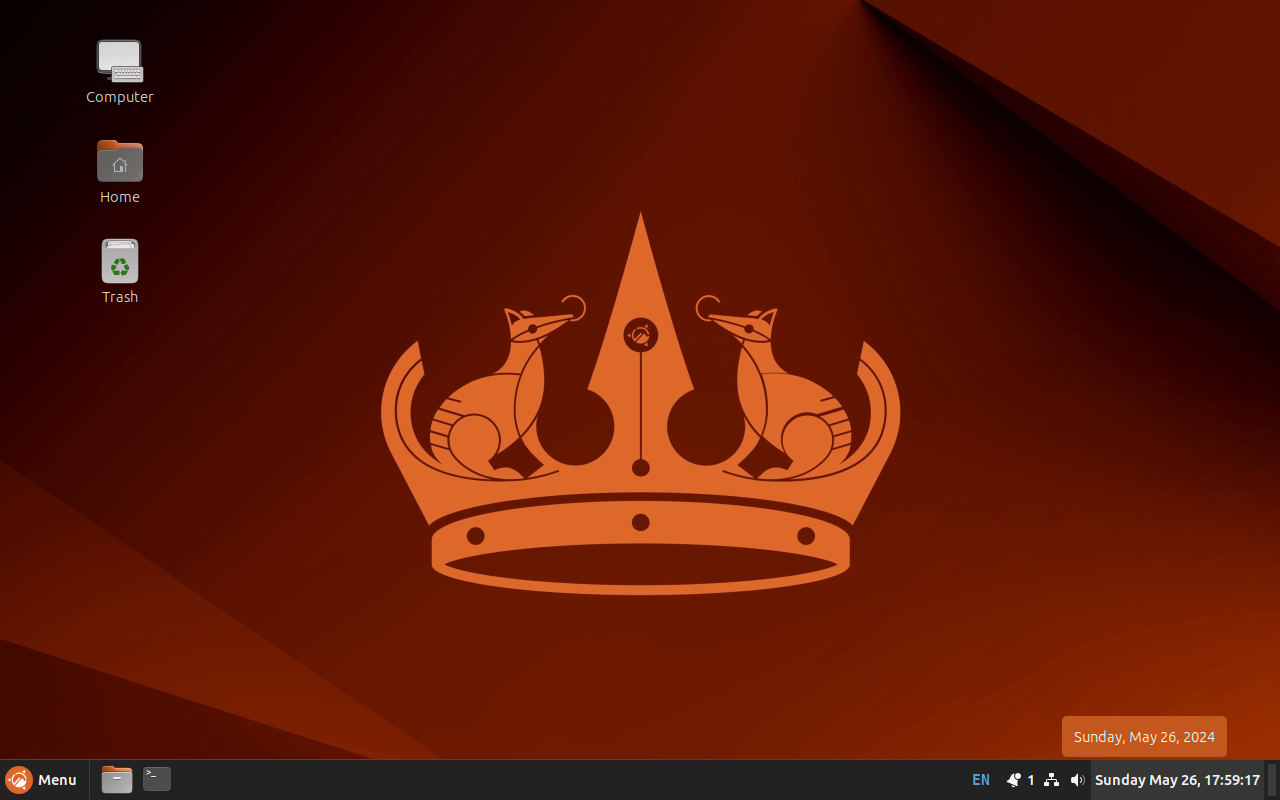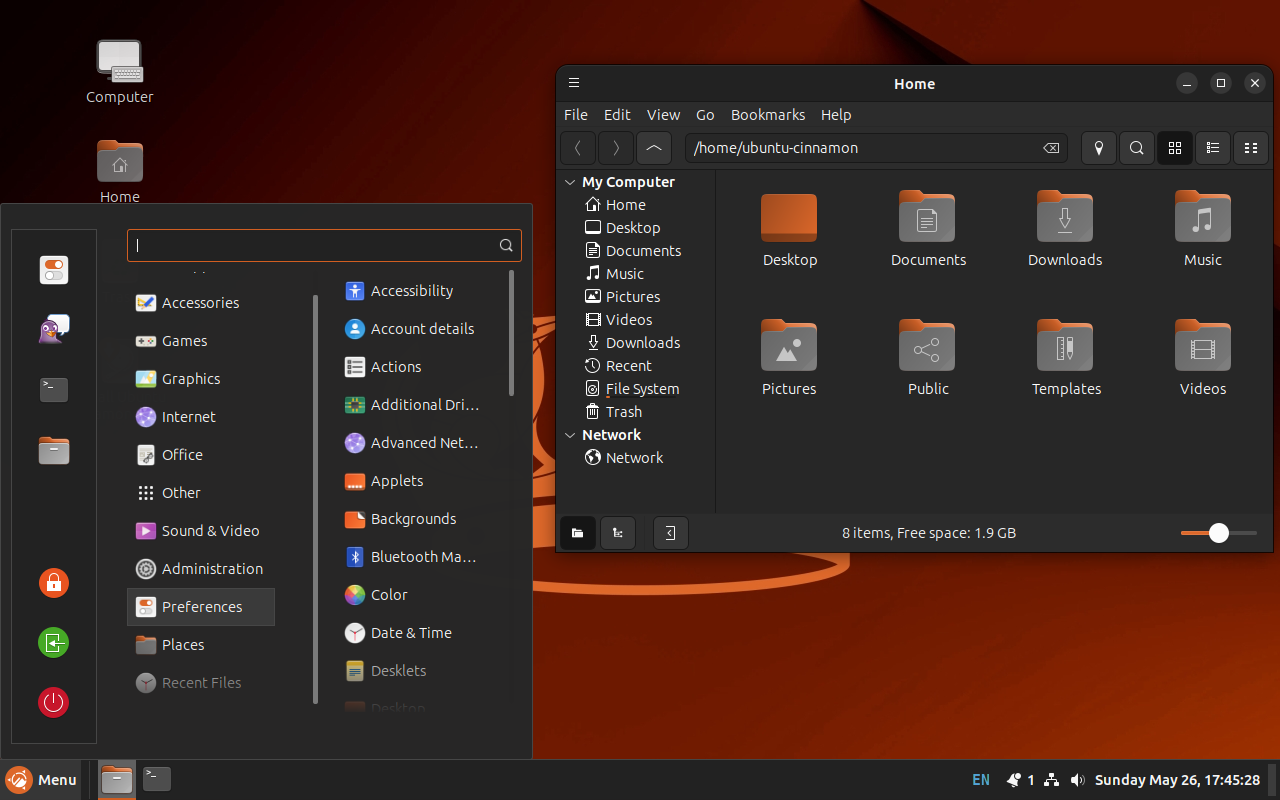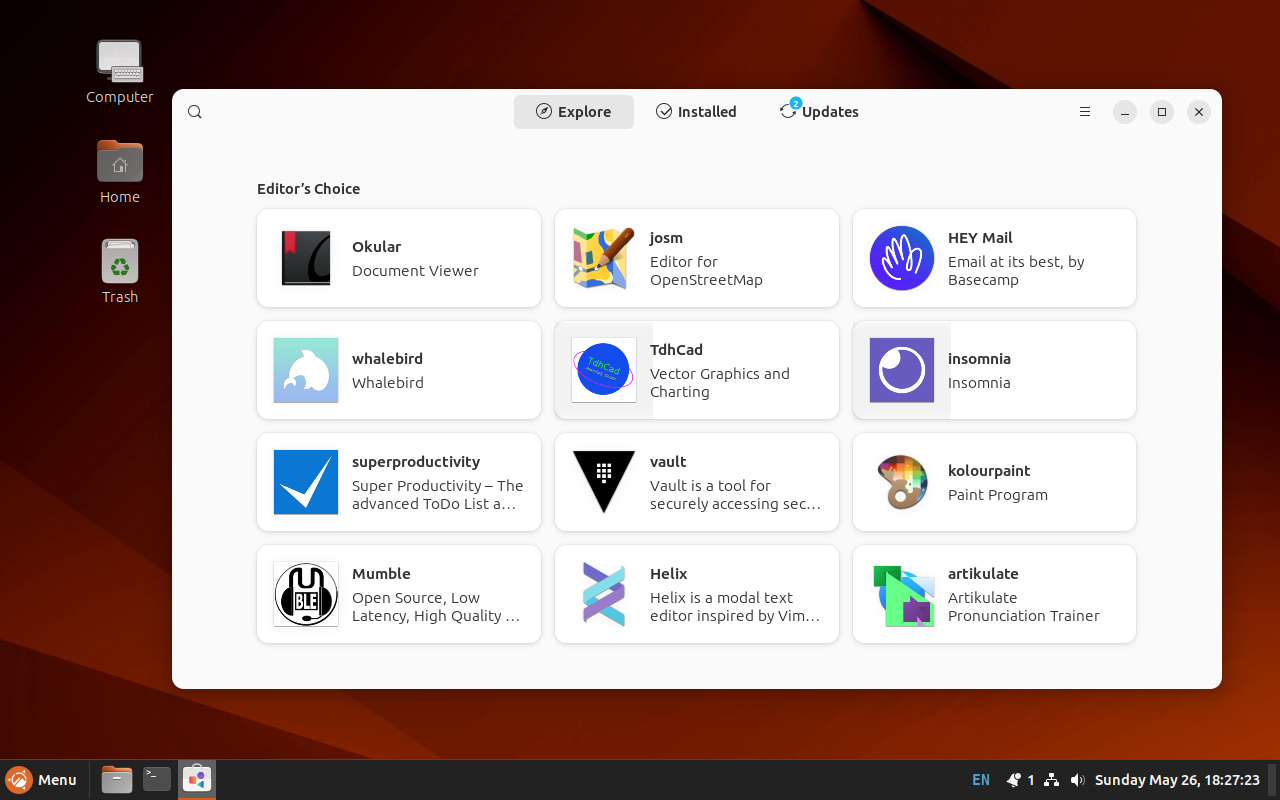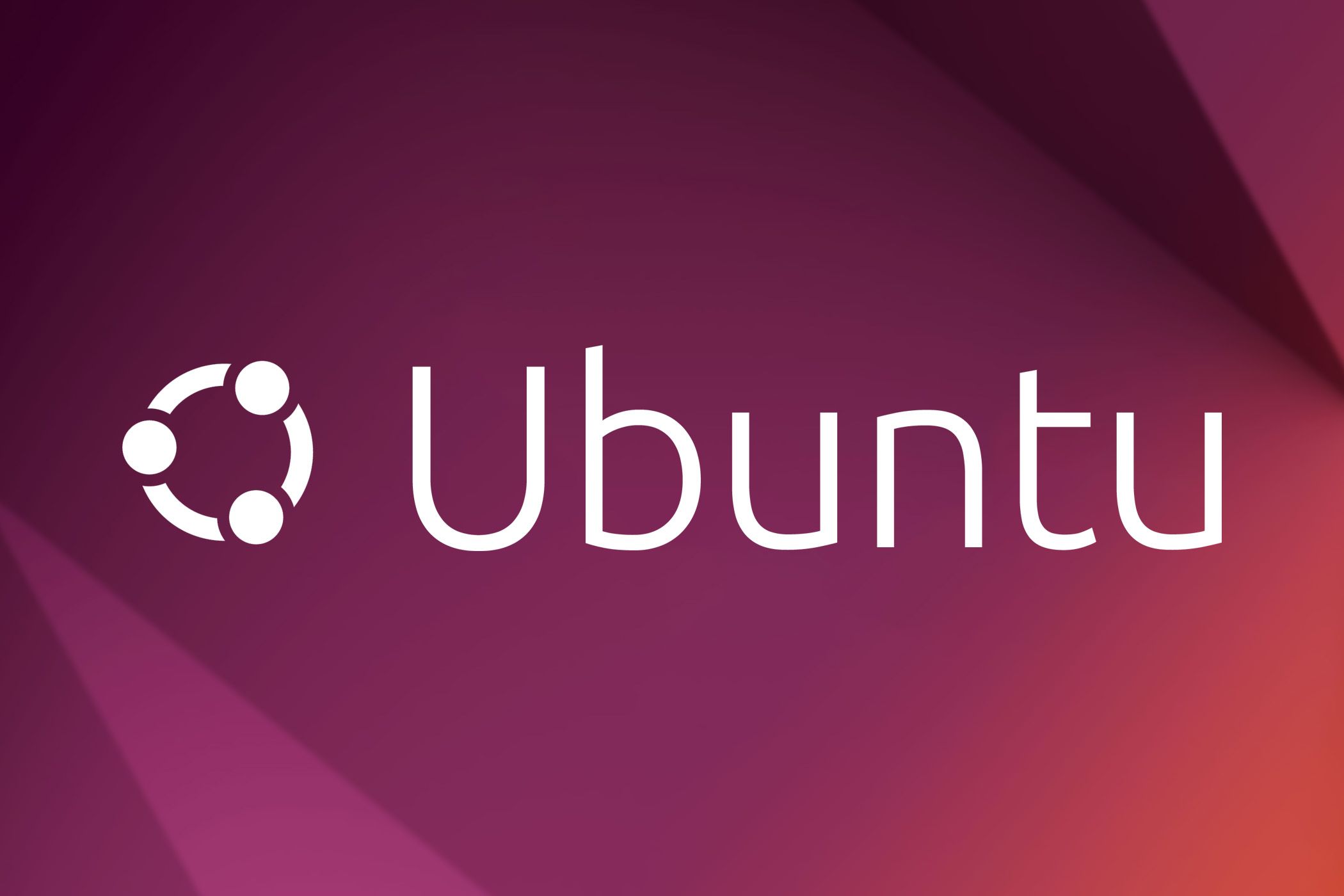Ubuntu Cinnamon Makes Switching From Windows to Linux Easy, Here’s How
Ubuntu
Quick Links
-
Why Switch to Ubuntu Cinnamon
-
Making the Switch to Ubuntu Cinnamon
-
Installing Software on Ubuntu Cinnamon
-
Ubuntu Cinnamon vs. Linux Mint
Key Takeaways
- Ubuntu Cinnamon provides a familiar desktop interface similar to Windows, making it easy for you to switch from Windows to Linux.
- Ubuntu Cinnamon is based on Ubuntu with a stable design. It uses Snap to manage packages and comes with various free and open-source software, including LibreOffice, Firefox, Thunderbird, and others.
- Ubuntu Cinnamon and Linux Mint are very similar to each other, with the only differences being the pre-installed software, theming, and the package management system.
If you’re looking for a Linux distro that looks very similar to Windows, then check out Ubuntu Cinnamon. Ubuntu Cinnamon provides a reliable, customizable, and relatively secure interface that makes switching from Windows easier, smoother, and more enjoyable.
Why Switch to Ubuntu Cinnamon
I’ve been using Windows for a while, and I’ve got to say, its layout just works. It’s easy to access your go-to programs—just click an icon on the taskbar or desktop, or press the Windows key to pop open the Start menu.
Need to get to a folder a lot? Just drop a shortcut on the desktop. It’s all straightforward and ready to use. So if you’re familiar with this interface and want to switch to Linux, Ubuntu Cinnamon is worth exploring.
Ubuntu Cinnamon is a game-changer. It’s built on the rock-solid foundation of Ubuntu, one of the most common Linux distros. Cinnamon is known for its modern, user-friendly, and highly customizable interface, which is easily adjustable to your preferences. It provides a complete desktop experience.
You can easily adjust the look of your desktop, rearrange panels, and resize icons. Installing and activating new themes is simple, and enables you to customize the appearance as you like.
You can also add Cinnamon Spices to your desktop for an even more personalized touch. These include applets, desklets, extensions, and more themes that enhance both functionality and visual appeal. To explore and download these enhancements, simply visit the official Cinnamon Spices website.
The menu button in Ubuntu Cinnamon is also located in the bottom-left corner, which organizes all features for convenient navigation. Cinnamon also comes with various widely used software and native Linux games. Additionally, you can run most of your Windows-native games through Proton and Wine.
Besides, the system offers window-snapping functionality that allows you to divide your screen into vertical or horizontal sections, or even quarters, making it easier to work with several applications simultaneously.
In the realm of AI, there’s a feature called Recall for Windows that takes continuous snapshots of your screen to help you recall what you’ve done on your computer. Although this feature is designed with privacy in mind, it has raised privacy concerns among users. Due to these concerns, many people are now interested in switching to Linux.
It’s important to keep in mind that no operating system is entirely safe from security and privacy risks, be it either Linux or Windows. The security of your computer also relies on how you use and configure it.
Another significant advantage of Ubuntu Cinnamon is its stability. Canonical, the company behind Ubuntu, ensures the operating system is reliable by providing timely security updates and driver enhancements. Furthermore, Cinnamon’s design is stable, with minimal changes over time, so even after a decade, the interface will feel familiar, albeit with updated visuals.
Making the Switch to Ubuntu Cinnamon
Switching to Ubuntu Cinnamon is more straightforward than you might think. First, download the Ubuntu Cinnamon ISO file from the official website. Next, use a tool like Rufus or Etcher to set up a bootable USB drive.
After that, reboot your system and navigate to the BIOS to choose the USB drive as the first boot device. Next, save the modified settings and exit the BIOS. Your system will boot from the USB drive, bringing up the Ubuntu Cinnamon installation menu. You can complete the installation by following the prompts on the screen.
You can also try Ubuntu Cinnamon without installing it by selecting the “Try Ubuntu Cinnamon” option from the boot menu. This lets you explore the operating system directly from the USB drive before committing to a full installation. Additionally, you can dual-boot Windows and Ubuntu Cinnamon if you prefer to keep both.
Installing Software on Ubuntu Cinnamon
The extensive software repository in Ubuntu Cinnamon includes thousands of applications, from productivity tools to games. Ubuntu Cinnamon provides GNOME Software as its app store and Snap as an alternative package management system. You can use the Synaptic package manager to view all available packages in your repository.
Ubuntu Cinnamon offers a vast range of free and open-source software. It also comes with excellent open-source alternatives for popular Windows programs, such as Firefox for browsing, LibreOffice for documents, and GIMP for photo editing. Additionally, if you need a specific Windows program, you can use emulators or compatibility layers like Wine to run it on Ubuntu Cinnamon.
Ubuntu Cinnamon is a great alternative for those who prefer not to use GNOME extensions. However, it includes most GNOME apps found in a standard Ubuntu installation. You can also install additional apps easily through the same app store. Cinnamon’s interface is similar to GNOME with extensions but more resource-efficient, providing a faster experience, even on high-end hardware.
Ubuntu Cinnamon vs. Linux Mint
Ubuntu Cinnamon enhances the classic Ubuntu experience with its unique features. Although the Cinnamon desktop interface originally came from Linux Mint, Ubuntu Cinnamon adds its own twist with the stylish Yaru theme. Unlike Linux Mint, Ubuntu Cinnamon includes snap packages by default, providing seamless integration of these convenient software bundles right from the start.
On the other hand, Linux Mint provides a polished and smooth user experience with its own apps and utilities, like the helpful welcome screen and its native software center. Linux Mint’s Software Manager relies on Flatpak for package management.
When comparing boot times, Linux Mint consistently boots faster than Ubuntu Cinnamon. Both use the same Cinnamon version 6.0.
One key difference is the number of pre-installed software applications. Linux Mint includes additional apps like Warpinator, Redshift, and Hypnotic, which are not found in Ubuntu Cinnamon. However, Ubuntu Cinnamon includes additional graphics tools like ImageMagick and games.
If you like to stay closer to the Ubuntu ecosystem with a flavor that’s officially part of the Ubuntu family, then Ubuntu Cinnamon could be your choice. However, if you prefer a traditional setup with a bigger community, Linux Mint is likely to be the better option.
Ultimately, the decision to choose from these Linux distros ultimately comes down to your preference—I prefer Ubuntu Cinnamon.








